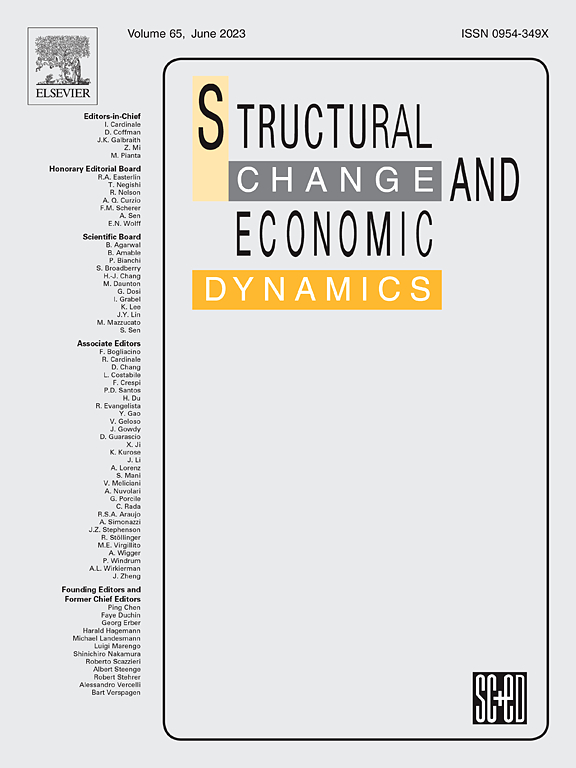Is this time different? Impact of AI in output, employment and inequality across low, middle and high-income countries
IF 5
2区 经济学
Q1 ECONOMICS
引用次数: 0
Abstract
Recent developments in artificial intelligence (AI) have revived concerns about technological unemployment and the increase in inequality due to technological change. Many studies of the impact of automation have considered a static picture of economies that put less emphasis on their potential for job creation through product innovation. They also tend to focus on developed countries and do not consider the potential impact on developing countries through trade and changes in specialisation patterns. This paper studies the impact of AI on the GDP and employment in low, middle and high-income countries, as well as on the income inequality across countries, based on computer simulations of a multi-country, multi-sector macroeconomic model with endogenous technological change proposed by Freire (2017, 2019). It considers the effect of AI in reducing labour requirements and the potential effects of increasing the pace of product and process innovation. The analysis suggests that the introduction of AI, even when assuming large effects of labour substitution, results in only small changes at the aggregated level of GDP and employment. However, there is an increase in income inequality across countries, and there are considerable shifts in jobs between production sectors and R&D. This suggests that AI may not cause mass technological unemployment but would still result in large distributional changes in low, middle and high-income countries.
求助全文
约1分钟内获得全文
求助全文
来源期刊

Structural Change and Economic Dynamics
ECONOMICS-
CiteScore
9.60
自引率
4.90%
发文量
159
期刊介绍:
Structural Change and Economic Dynamics publishes articles about theoretical, applied and methodological aspects of structural change in economic systems. The journal publishes work analysing dynamics and structural breaks in economic, technological, behavioural and institutional patterns.
 求助内容:
求助内容: 应助结果提醒方式:
应助结果提醒方式:


